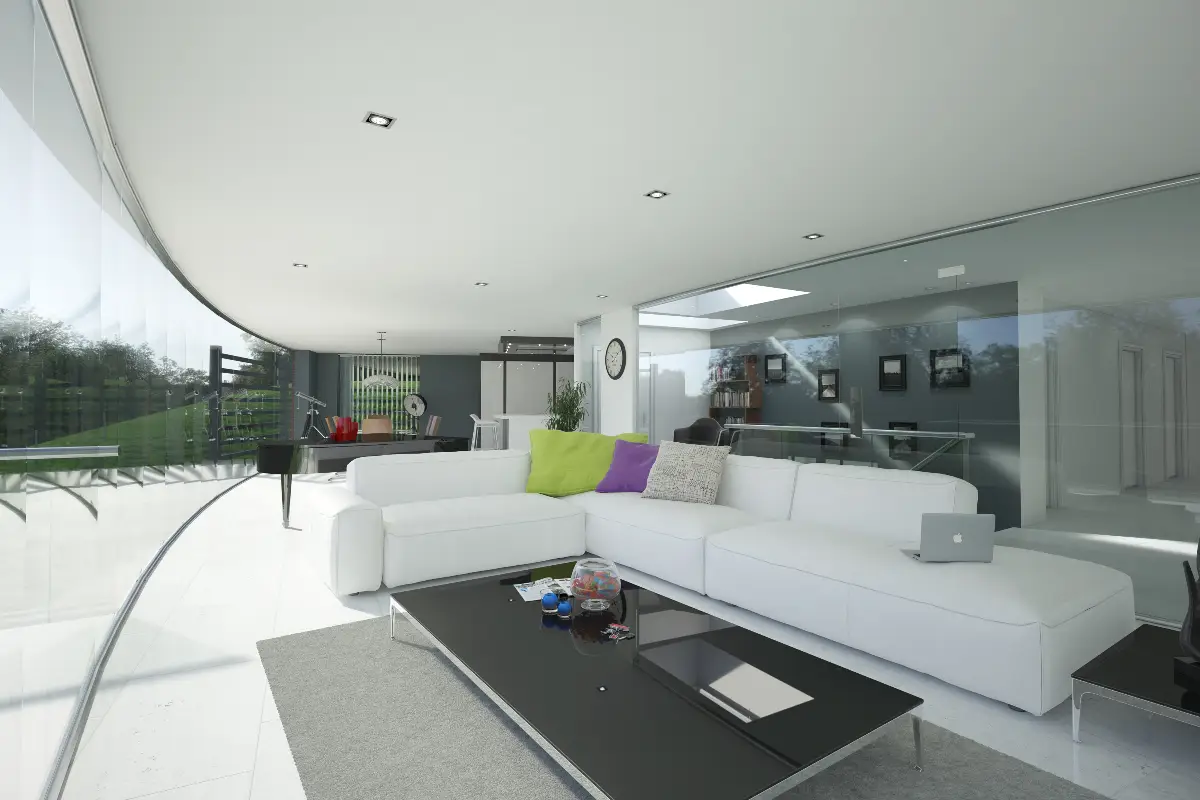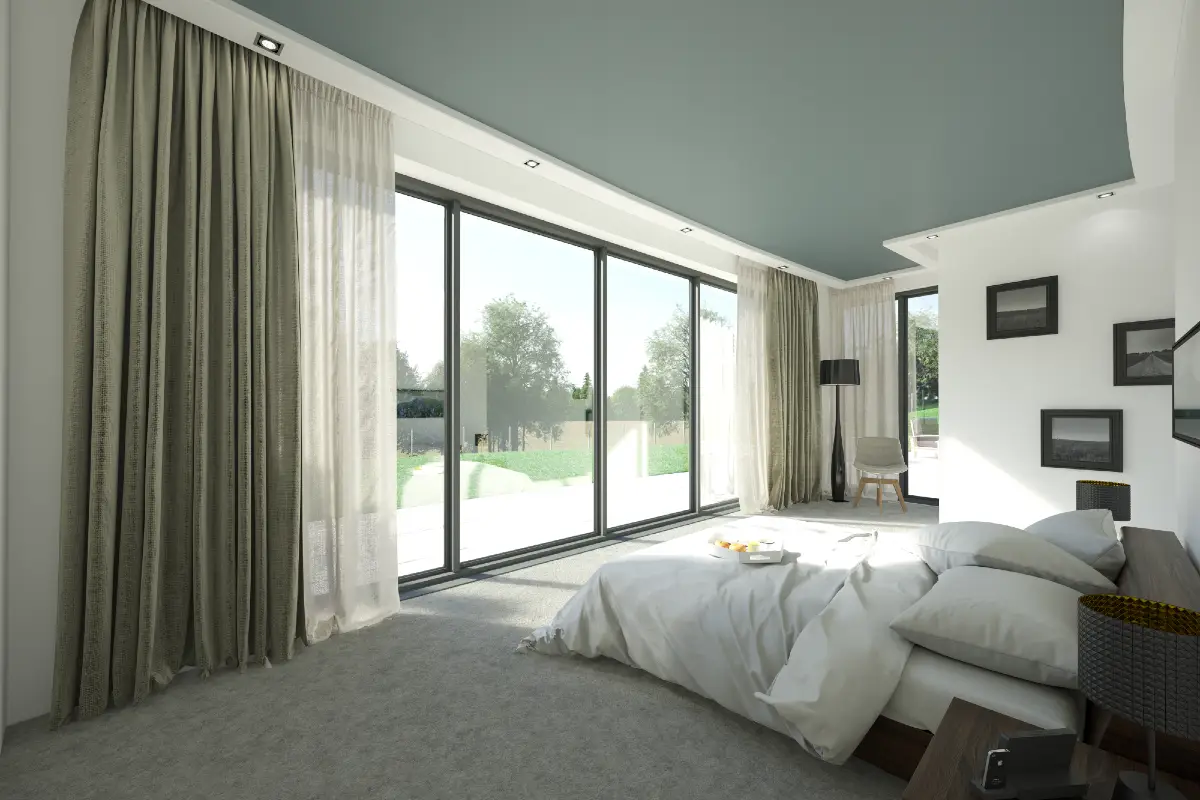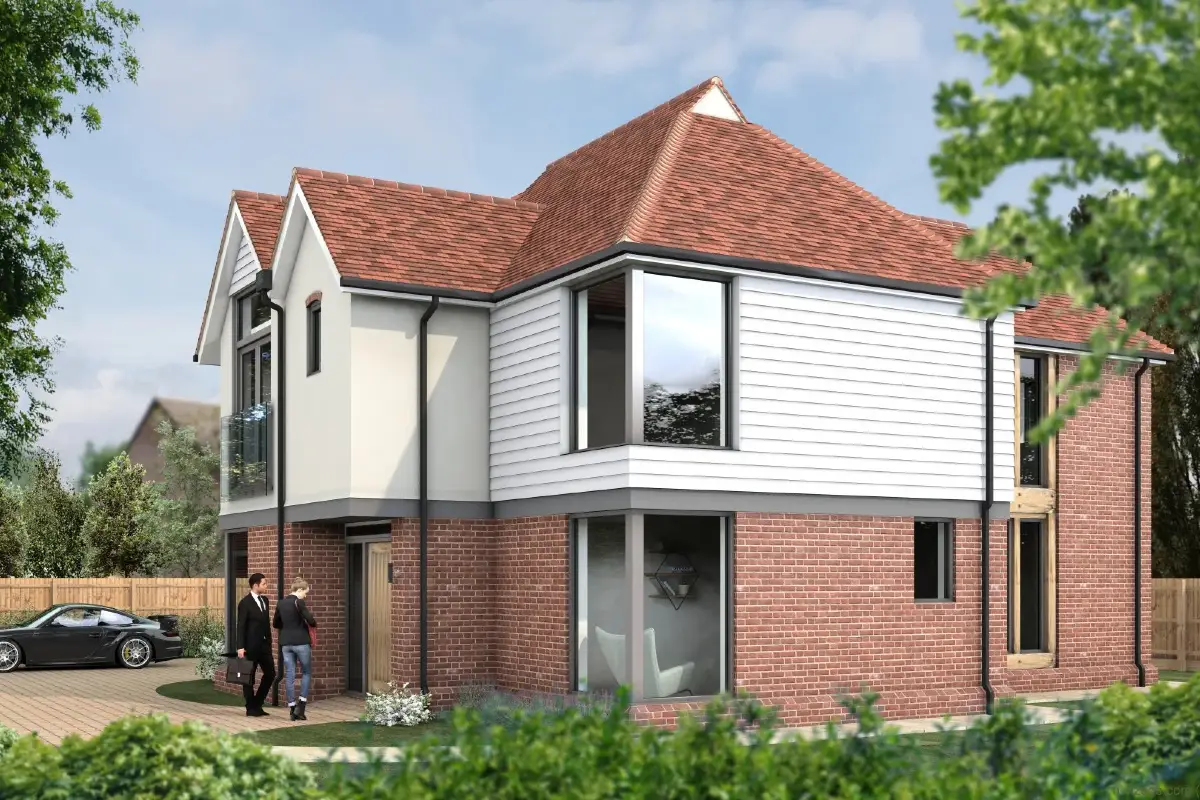Planning permission pitfalls: What small developers need to know

Securing planning permission is one of the most critical milestones in any project.
For small developers, mistakes at this stage can be costly, as they can lead to redesigns, delays, wasted application fees, or outright refusals.
Building a strong planning case
To improve your chances of success, it’s essential to take a design-led approach that incorporates planning from the start. This means building your design around planning policy, site conditions, and the site’s context, rather than adjusting for them later.
At the same time, you’ll need to adopt a proactive strategy, which involves carrying out site assessments, engaging with the local authority and community, and bringing in the right consultants from the start to anticipate and plan for challenges.
This article outlines common planning pitfalls small developers often face and how to avoid them.
1) Misunderstanding when planning permission is required
One of the most common mistakes is assuming small-scale projects don’t need planning permission. Many do.
Changes to an existing home usually require householder permission, while new builds, subdivisions, or changes of use need a full planning application.
Even seemingly straightforward changes, like converting an office to residential use and dividing a house into multiple flats, can require a full application. The same applies to schemes that affect access, layout, or parking.
While some works can fall under Permitted Development (PD) rights, these are tightly regulated and subject to strict conditions. For example, you might be able to build extensions, loft conversions, garden offices, and outbuildings without full permission, but only if they stay within certain size, height, and location limits.
Many councils also restrict PD rights through Article 4 Directions, particularly in conservation areas.
Moreover, PD rights don’t apply to listed buildings or sites in national parks.
You might need additional consents, such as listed building consent or tree works approval, for:
- Alterations to Listed Buildings
- Works on protected trees (those under Tree Preservation Orders)
- Demolition, especially in conservation areas.
Tip: Always seek professional planning advice before doing any work. A quick conversation with a planning consultant or architect can save you time, money, and frustration.
2) Ignoring site constraints
Many small developers commission detailed drawings or finalise their plan before identifying key site constraints. These have a significant impact on the layout, scale, materials, and even the viability of the entire scheme.
Here are some of the most common restrictions that can derail a planning application.
Green Belt and Outstanding Natural Beauty (AONB)
Only certain types of development are allowed in the Green Belt and AONBs, and gaining permission often requires demonstrating “very special circumstances” or significant public benefit. That’s why new-build housing in these areas typically requires strong justification and a sensitive, landscape-led design.
Conservation areas
You might need permission even for small changes like adding modern cladding or UPVC windows in conservation areas. Your design must preserve or enhance the area's character and will be closely examined by the Local Planning Authority, especially when it comes to materials and detailing.
Flood Risk Zones
If your site falls within Flood Zone 2 or 3, you’ll need a Flood Risk Assessment and might have to pass the Sequential Test, showing that no safer site is available for the same type of development. This can affect the scheme’s layout, drainage strategy, and overall viability.
Protected species and habitats
Sites near woodland, ponds, or older buildings may require ecology surveys - also known as a Preliminary Ecology Assessment (PEA) - for protected species such as bats, great crested newts, or nesting birds. Since this wildlife can’t be relocated, your design might need to include mitigation measures or biodiversity enhancements.
Ancient Woodland is another key constraint. All new development, including domestic gardens, must respect a 15-metre exclusion zone.
Highways and access issues
Planning applications are often refused because of poor access, lack of turning space, blocked sightlines (visibility splays), or insufficient bin storage. This is especially common on rural, infill, or backland plots, where safety and servicing are a priority.
Proximity to heritage assets
If your site is near a listed building or non-designated heritage asset, planners will assess how your proposal affects its setting and character, even if the site itself isn’t protected. You may need a Heritage Statement to justify your design approach and demonstrate that the development won’t cause harm.
Biodiversity Net Gain (BNG)
From 2024, most developments are required to deliver a minimum 10% biodiversity net gain, meaning the site must support more biodiversity than it did pre-development. Some councils ask for 15% or more and, in some cases, developers must secure off-site units or pay into a local BNG fund.
Tip: Before you invest in a concept design or a site plan, arrange a desktop site appraisal or request pre-application advice from the local authority.
3) Failing to engage the right consultants
Planning applications are becoming increasingly complicated, even for small, single-plot developments. Local authorities expect well-prepared, policy-compliant submissions backed by accurate drawings and specialist reports. Trying to navigate this alone or relying on a draughtsperson or technician without planning knowledge can undermine your chances of approval.
Bring in the right people from the start.
- A Planning Consultant will interpret local and national policy, manage pre-app discussions, shape your planning strategy, prepare Planning Statements, and support you through appeals, if needed.
- An architect with experience in your type of project will produce a site-led design that responds to constraints and aligns with planning policy.
- A Drainage Engineer can assess existing surface water capacity, design sustainable solutions, and help prepare the drainage strategy required for your application.
If your site includes woodland, ponds, grassland, or old structures, make sure to engage an ecologist who will carry out Preliminary Ecological Appraisals (PEAs) and any necessary follow-up surveys.
And if your proposal involves new access or changes in parking or traffic flow, a highways engineer can model safe access, turning areas, visibility splays, and waste collection arrangements.
Tip: Seek planning advice early. Involve your planning consultant, architect, and relevant specialists from the start to produce a cohesive, well-evidenced submission and avoid delays.
4) Overlooking underground services and drainage
What’s below ground can have just as much impact on your scheme as what’s above it. Strict rules apply if your site lies over or near a public sewer, water main, or drainage pipe. These typically restrict construction within a certain distance (often 3 metres) and may require a build-over agreement from the local water authority. Sometimes, you’ll need to divert pipes, which can add cost and cause delays.
A utilities search will show what’s running beneath your site. Your architect or planning consultant can usually arrange this.
Moreover, even small schemes need a surface water and foul drainage strategy, especially if the site doesn’t have a mains connection, falls within a Critical Drainage Area (CDA), or lies within a flood zone.
Tip: Bring in a drainage consultant or civil engineer to assess whether the site is suitable for soakaways, attenuation tanks, or connection to mains, and prepare the documentation required for your planning submission.
5) Missing or incomplete key reports
Many planning applications are delayed or refused because required reports are missing, incomplete, or poorly coordinated.
Depending on the site, your application may need one or more of the following:
- Design & Access Statement (DAS) - explains the design rationale and how the proposal responds to its context.
- Planning Statement - sets out how the scheme aligns with national and local planning policy.
- Transport Statement - required if the development affects traffic, access, or parking.
Flood Risk Assessment (FRA) - needed for sites in Flood Zones 2 or 3, or where surface water drainage is a concern. - Biodiversity and Ecology Surveys - assess the presence of protected species or habitats, such as bats, reptiles, and nesting birds. These surveys may be split into several separate reports, depending on what is being assessed.
- Biodiversity Net Gain (BNG) Assessment - shows how the development will deliver a measurable uplift in biodiversity (10% minimum, more in some areas).
- Tree Survey or Arboricultural Report - required if there are mature trees on or near the site, especially those under Tree Preservation Orders (TPOs).
- Heritage Statement - needed if the site affects a listed building, conservation area, or non-designated heritage asset.
- Archaeological Desk-top Study - required for sites with archaeological sensitivity, which are often flagged in local Historic Environment Records (HER).
- Air Quality Assessment - needed in or near Air Quality Management Areas (AQMAs) or where new traffic may affect air quality.
- Acoustic Impact Assessment - required if the development will generate noise or lies close to a major noise source, such as a railway or motorway.
- Land Contamination Report - often required for brownfield or former industrial sites, especially for change to residential use.
These documents directly inform your site plan and can determine your scheme's layout, access, and overall viability.
Leaving out key documents triggers delays and undermines the strength of your application, especially when neighbours or consultees object.
Tip: Some reports take time to prepare, especially those involving baseline surveys or seasonal ecological assessments. Build your report strategy into the early planning phase, and ask your ecologist or planning consultant to flag any seasonal or site-specific requirements from the outset.
6) Inadequate community engagement
Even the most policy-compliant, well-designed schemes can face fierce local opposition, and community perception is especially important in smaller towns and rural areas. A high volume of objections can influence planning officers or committee members and trigger refusal on subjective reasons like “out of character” or “overdevelopment.”
Engaging with the local community early builds trust, increases transparency, and allows you to respond to local concerns in the design before opposition gathers momentum.
How to engage the local community:
- Leaflet drops or a dedicated web page - Outline your design rationale, explain any community benefit, and provide a way for residents to share feedback.
- Informal conversations with neighbours - Speaking directly with neighbouring property owners can help resolve issues early.
- Presentation to the parish council - Attending a public meeting to present your proposal shows openness and may reduce formal opposition.
Tip: Identify your most affected neighbours, those bordering the site or impacted by access, overlooking, or parking. Speak to them directly and address their concerns before applying for planning permission.
7) Relying too heavily on precedent
Just because a similar scheme was approved nearby doesn’t mean yours will be. Planners make decisions based on current policy, site-specific constraints, and cumulative impact.
That earlier approval may have predated policy changes, been determined under different local leadership, or been a one-off exception.
Tip: If you’re referencing a similar approval nearby, show how your proposal meets current planning policy and explain any differences in site context, access, or layout.
8) Underestimating design expectations
Local authorities are paying closer attention to the quality and context of design, even for small developments. Applications often fail because they feel out of place with their surroundings.
Planners assess how your scheme relates to its setting, neighbouring buildings, and the wider street scene.
You need to consider:
- Building form and massing - your proposed building's overall shape, height, and volume must be proportionate to the surrounding area.
- Rooflines - the roof shape, pitch, and detailing should reflect local architecture, unless you can make a strong case for a contemporary alternative.
- Materials - use high-quality, durable materials that are appropriate for the setting.
- Relationship to neighbouring properties - respect adjacent homes by avoiding overbearing massing, overlooking, or loss of light.
- Streetscape and visual impact - your proposal should enhance the local character and contribute positively to the street scene.
Design expectations are especially high in sensitive locations, such as conservation areas, edge-of-settlement plots, or heritage settings. As design decisions are often subjective, securing officer support early through pre-app planning advice can make all the difference.
Tip: Work with an experienced architect who can balance creativity with context.
9) Accidentally triggering affordable housing contributions
Many small developers assume affordable housing policies only apply to large-scale schemes, but that’s not always the case. Even a small increase in unit numbers or floorspace can trigger financial obligations that affect project viability.
Under national policy, councils generally shouldn’t seek affordable housing on developments of fewer than 10 homes. However, in designated rural areas, that threshold can drop to 5 or fewer units.
Common triggers include:
- Crossing the unit threshold.
- CIL liability - the Community Infrastructure Levy may apply to new builds or conversions that create over 100m² of new floorspace, depending on local policy.
- Conversions or replacement dwellings with uplift in floorspace - replacing or converting buildings into larger or multiple dwellings can increase the gross internal area (GIA) enough to trigger financial contributions.
- Site sub-division - submitting separate applications to stay under the threshold (e.g., two applications for 4 homes each) can be seen as manipulation. Councils often treat this as a single site and apply contributions.
Affordable housing contributions are usually secured through a Section 106 agreement, and the costs can be substantial. To avoid unexpected surprises, check the council’s Local Plan and Affordable Housing SPD for thresholds and exemptions.
Tip: Get expert planning advice early to assess how many units are viable on your site without triggering contributions or to factor contributions into your feasibility.
10) Misjudging visibility and overlooking rights to light
On infill and backland plots, where space is tight, neighbours often object to new schemes because of loss of light, privacy, or amenity. In some cases, they may even pursue a legal right to light claim under property law. This is a private legal matter, distinct from the planning process, and can still apply even if planning permission is granted.
These issues, especially if supported with a daylight/sunlight report, can be enough to sway a planning officer or derail a proposal at committee.
Tip: Use 3D modelling, section drawings, or formal daylight/sunlight assessments to evaluate potential impacts early and adjust massing, orientation, or window placement.
11) Misjudging planning permission timescales
While the official timeline for a standard application is 8 to 13 weeks after validation, real-world timescales are often longer, especially for complex or sensitive sites.
Common causes of delay include missing reports or invalid drawings, applications referred to committee (typically when a proposal is contentious or receives several objections), and planning officers requesting revisions.
Bear in mind that reaching validation can take several weeks, depending on how busy the local authority is.
Tip: Don’t promise buyers, builders, or investors a start date before gaining permission. Factor in delays at every stage - design, validation, consultation, and decision - and build a realistic buffer into your project timeline.
12) Neglecting access for construction
Access during construction is a key consideration, especially on tight infill plots, rural backland sites, or sloping ground.
Narrow lanes, tight corners, overhead cables, or steep driveways can limit access for delivery vehicles, cranes, and emergency services. If large equipment or materials can’t reach the site safely, the project may become unviable or require costly workarounds.
In constrained or sensitive locations, the council may condition approval on a Construction Environmental Management Plan (CEMP). This outlines how you’ll manage traffic, deliveries, safety, access, environmental impact, and materials during construction.
Tip: Consider buildability from the start.
13) Not factoring in planning conditions
Approval isn’t the end of the road. Most decisions come with a set of planning conditions, which must be discharged either before construction (pre-commencement) or before occupation (pre-occupation). This work is often excluded from the original scope of services, so you may be charged extra.
Approvals commonly include 10-20 conditions, especially in sensitive or complex sites.
Typical conditions include:
- Submission of materials samples
- Details of boundary treatments
- Installation of bat boxes or biodiversity enhancements
- A Construction Management Plan (CEMP)
- Drainage and highways design sign-offs.
Failing to address these can stall your project or even invalidate your permission.
Tip: Discharging conditions often requires separate applications and fees. Group conditions, where possible, to save money and avoid delays.
Planning permission isn’t just a formality; it shapes your entire project. With the right team and strategy, you can avoid costly pitfalls and move forward with confidence.
Are you looking to develop a small residential development? We help developers across Kent and the South East de-risk the planning process with feasibility studies and expert planning advice. From initial site appraisals to full planning submissions and detailed design, we handle every project stage. If you’re looking for a planning-savvy architectural partner, we’re here to help.
Call us on 01227 457 545 or email us at enquiries@taylorroberts.co.uk to discuss your project.
Contact our team today for expert property advice - book now for free.

Architectural Insights
Insights, updates and ideas from the studio - here’s what we’ve been writing about lately.


